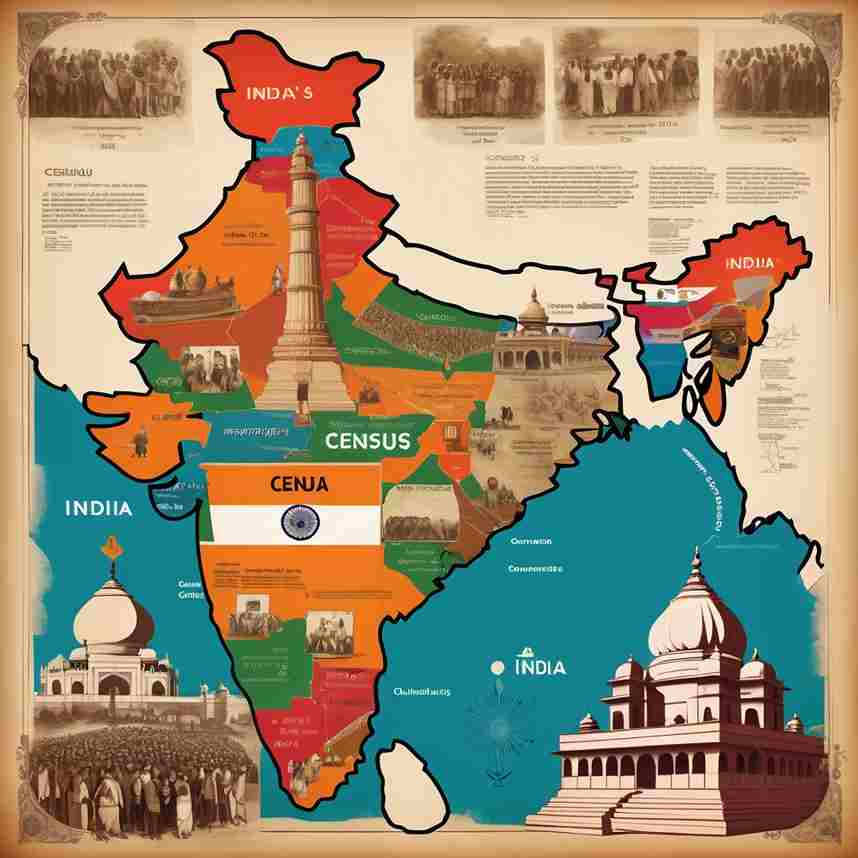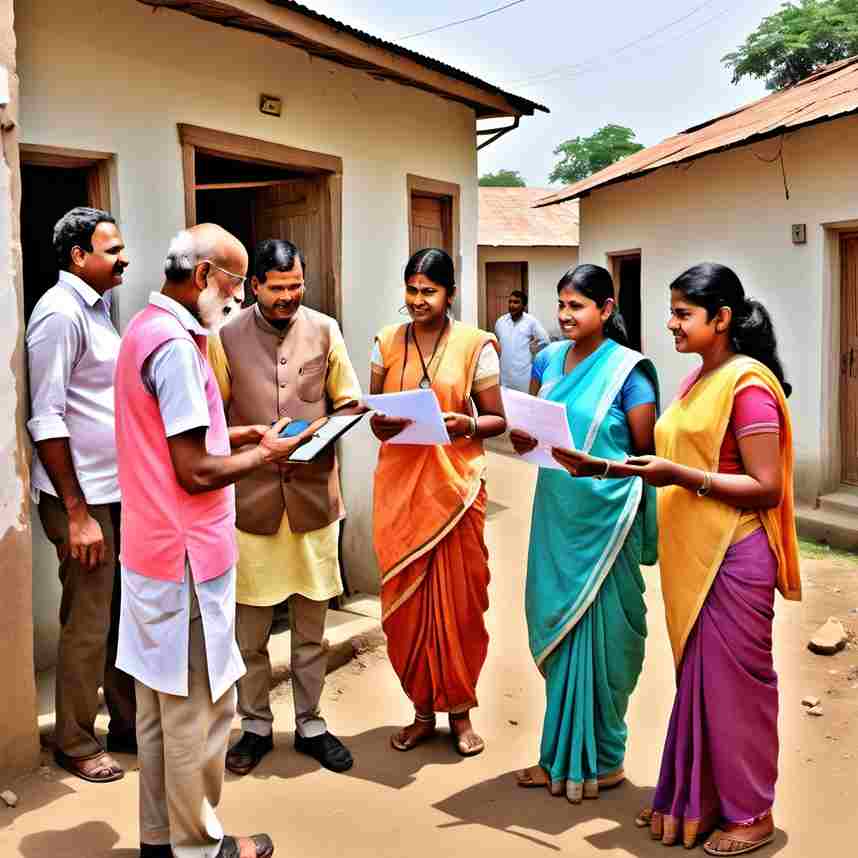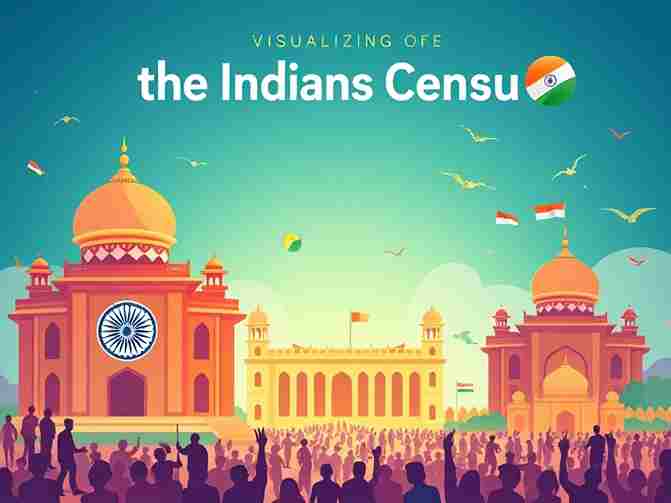Why the Indian Census Matters More Than You Think
Hey there! Have you ever considered the Indian Census and why it’s such a big deal? It might seem like just another government survey, but believe it or not, the Census is way more than a headcount. It’s like a treasure chest full of information that helps shape our lives in ways we often overlook.
Since its start in 1872, the Indian Census has happened every ten years, without fail—even through wars, political upheaval, and natural disasters. It’s amazing.
However, the Indian census was not conducted due to COVID-19. Few countries can say they’ve kept up this kind of consistency. As we gear up for the next one, it’s a good time to look back and see what makes the Census so special.
The next Indian Census most likely will be conducted in 2025

Table of Contents
The Census: More Than Just Counting Heads
First, let’s clear up a big misconception: The Indian census is not just about knowing how many people live in India. Sure, counting people is part of it, but there’s so much more data collected that goes unnoticed. Imagine the Census as a big data-gathering machine that tells us things like:
- The types of jobs people hold and their employment status
- How many kids are going to school, and where
- Who has access to basic amenities like water, electricity, and toilets
- The expansion of urban areas and the rate at which cities are growing
- The fertility and mortality rates that give us insight into health
- Details about the diversity of languages, religions, and even migration patterns across states
In short, the Census gives us a pretty detailed snapshot of India every ten years. And that’s what makes it so valuable. The government uses this information to make decisions and create plans that impact all of us. Without it, planning for things like infrastructure, healthcare, and education would be a bit like flying blind.
Democracy and the Census: A Perfect Pair
India is the world’s largest democracy, and believe it or not, the Census is one of the tools that keeps our democracy strong. Here’s how: Census data is used to draw the boundaries for our electoral constituencies—whether they’re for Parliament, state assemblies, or local bodies. This way, representation aligns with population changes, keeping things fair and balanced.
So, when you participate in the Census, you’re not just answering a few questions. You’re contributing to a process that helps keep our democracy functional and inclusive.
A Quick Look Back: India’s Census Through History
If you think about it, counting people is a pretty ancient idea. In India, we can find Census-like records as far back as the Rig Veda (800-600 BC) and in Kautilya’s Arthashastra. However, the first organized Census as we know it today was conducted in 1872 by the British. And since then, every ten years, India has continued this tradition.
It’s a huge undertaking every time, but the fact that we’ve kept it going—despite everything that’s happened over the years—says a lot about India’s commitment to understanding its people.
The Two Phases of Census 2011: Keeping It Simple
Let’s look at the Indian Census 2011 for a moment. This Census was done in two phases to ensure the process was smooth and organized:

- House Listing and Housing Census: This first phase involved listing every building and household across India. The Census team didn’t just take down addresses. They also gathered info about what amenities each household had—like water, electricity, and sanitation.
- Population Enumeration: This is where the magic happened. The Indian Census team visited each home to count and gather information on every individual living there. From February 9 to February 28, 2011, around 240 million households were visited, and the data was gathered meticulously.
To make sure nothing was missed, the Census team did a quick re-check from March 1 to March 5. On the night of February 28, even the homeless population was counted, ensuring everyone was included. It’s incredible how thorough this process is, right?
The World’s Biggest Peacetime Mobilization
Did you know the Indian Census is the largest peacetime operation in the world? Yup, it’s true! Think about it: India has one of the largest populations in the world, and we’re spread across vast landscapes, from bustling cities to remote villages. Here are a few mind-blowing numbers from Census 2011 to put things in perspective:
- Over 2.7 million people worked on the Census, going door-to-door in every corner of the country.
- They covered 35 states and union territories, 640 districts, 5,767 sub-districts, 7,742 towns, and over 600,000 villages.
- The Census questionnaires were printed in 18 languages to make sure they could reach everyone.
And don’t forget, some countries don’t even have as many people as we have Census workers!
Tackling the Logistics: The Real Census Challenge
Running the Census isn’t as simple as handing out forms and collecting data. It’s a logistical puzzle that requires serious planning and coordination. Here’s a look at a few of the biggest challenges the Census team faces:
- Designing the Questionnaire: The Indian Census questionnaire has to be detailed enough to collect all relevant information but also straightforward enough for everyone to understand. Census 2011 used a special paper with barcodes and numbering to keep things organized.
- Distribution of Materials: Imagine having to ship millions of forms, instruction manuals, and other materials across a country as vast as India. Every form and manual had to reach the right location, and it did—thanks to an incredibly detailed database and lots of teamwork.
- Training 2.7 Million Workers: With so many people involved, training had to be top-notch. Trainers used everything from PowerPoint presentations to practice sheets to ensure every Census worker knew exactly what to do.
- Mapping Every Corner of India: Mapping the entire country is no easy task. Sixteen workstations were set up to create a digital map database of every village, town, and city. It’s probably the most accurate map resource we have today.
If you’re curious about Census technology, you can check out this detailed overview of India’s Census

Getting the Word Out: The Publicity Push
Let’s be honest—the Census would be pretty tough without public support. That’s why the Census team launched a massive publicity campaign to ensure everyone was on board. This wasn’t just a few posters or commercials, either. They went all out:
- Mass Media: Newspapers, TV, and radio were used to spread the word across the country.
- Social Media and Digital Outreach: Reaching the tech-savvy population with digital campaigns was crucial.
- Celebrity Endorsements: Cricket legend Sachin Tendulkar and film star Priyanka Chopra pitched in, making Census participation look cool.
For an inside look at Census outreach worldwide, check out this https://www.unfpa.org/census
So, Why Should You Care?
The Census isn’t just about numbers—it’s about understanding who we are as a nation. And as citizens, we play a vital role in this. The data collected affects everything from school funding and healthcare to road construction and city planning. When you answer Census questions, you’re shaping the future of your community and country.
As India prepares for its next Census, every single response will count. Each one helps India understand itself a little better and make decisions that benefit everyone. So, when the Census knocks on your door, take a moment to realize—you’re part of something massive.
What do you think? Does the Census change the way you view India’s diversity and development?
FAQs
Why is the Census conducted every ten years, and what happens if there’s a gap?
The Indian Census is conducted every decade to capture population and demographic changes over time, which allows policymakers to identify trends and make timely adjustments to plans. A gap could result in outdated data, leading to less effective policies, resource misallocation, and skewed electoral representation.
What specific types of data does the Census collect, and why are they important?
The Indian Census collects data on population size, age, literacy, employment, housing, access to amenities, and more. This information helps government bodies, researchers, and businesses understand societal needs, design welfare schemes, and make targeted investments, ensuring resources are directed where they’re most needed
How does the Census impact everyday life for an average Indian citizen?
The Census of India impacts daily life through better-planned public services. For example, Census data influences the allocation of funds for schools, hospitals, infrastructure, and welfare schemes. Electoral boundaries are also redrawn based on population shifts, ensuring fair representation in governance
How is the data collected during the Census kept secure and confidential?
Indian Census authorities take several measures to ensure data security, including barcoding, digital data processing, and restricted access to sensitive information. Data is aggregated and anonymized before analysis and publication to protect individual privacy, in compliance with legal safeguards.
What challenges does India face in conducting such a massive Census, especially in remote or diverse regions?
Challenges include reaching remote and inaccessible areas, communicating in multiple languages, training millions of Indian Census workers, and ensuring consistent data quality. Extensive planning, localized training, and advanced mapping help overcome these obstacles, ensuring comprehensive coverage
How does the Indian Census support India’s democracy and the concept of “representation”?
Census data determines the population of electoral constituencies, ensuring fair representation in Parliament, state assemblies, and local bodies. By adjusting constituency boundaries based on population changes, the Census helps maintain balanced representation in India’s democratic processes.
Are there any limitations or gaps in the Census data? How are they addressed?
While the Census is comprehensive, it faces challenges like underreporting and data inconsistencies in some areas. Authorities use post-enumeration surveys to identify and address such gaps, and emerging technology is being explored to improve accuracy in future censuses.
How has technology improved the accuracy and efficiency of the Census over the years?
Technology has enabled digital mapping, advanced data processing, and secure data storage. Special materials like bar-coded forms and multilingual digital tools streamline data collection and reduce errors, while satellite imagery helps create detailed maps for field teams.
How can regular citizens engage with or benefit directly from Census data?
The Indian Census data is available publicly and is valuable for NGOs, researchers, businesses, and individuals seeking insights into population trends, economic activity, and regional demographics. It’s a treasure trove for anyone interested in understanding or influencing social, economic, or policy issues.
With such vast data collected, how is it utilized in India’s long-term development planning?
Government bodies use Indian Census data to plan infrastructure, allocate funds, and address issues like urbanization, healthcare, and education. By analyzing demographic and economic trends, the Census helps shape long-term policies aimed at inclusive development and improved living standards for all citizens.

